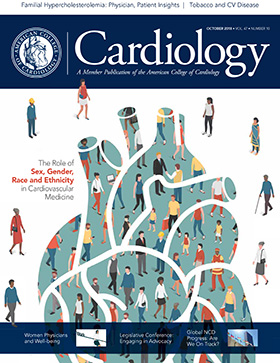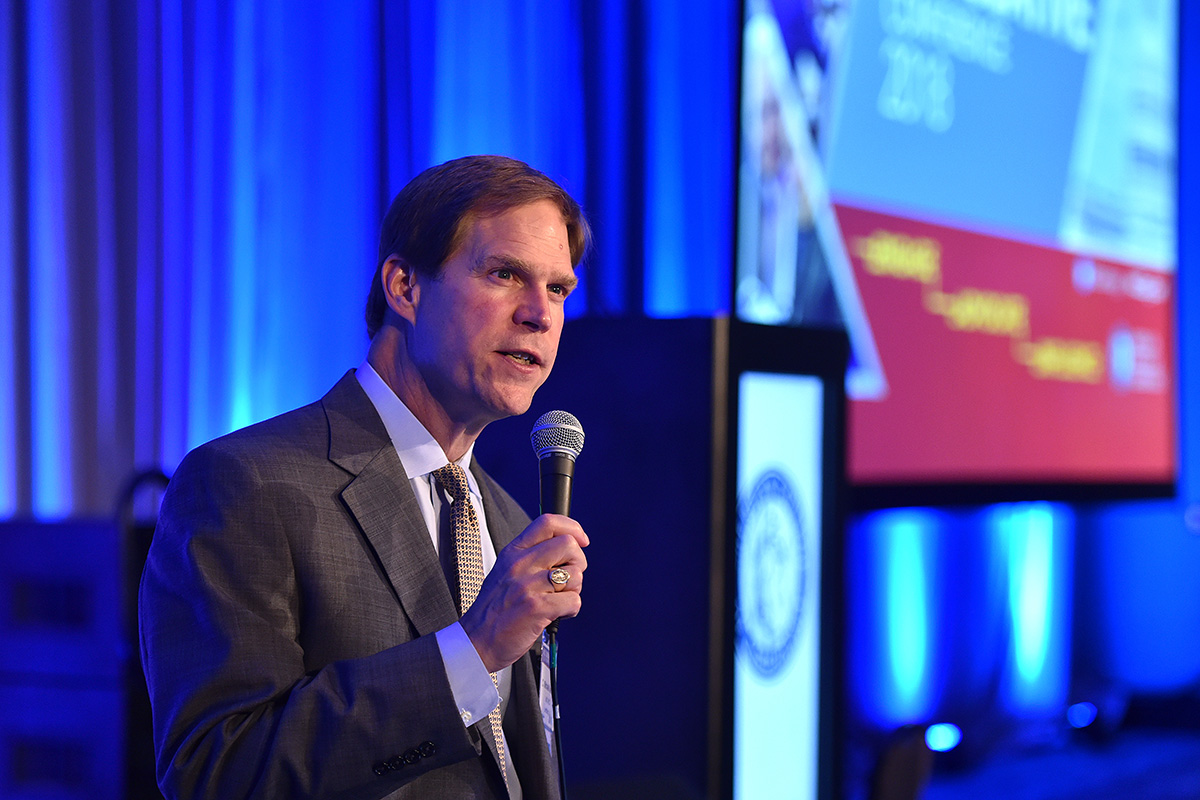Feature | Optimizing Patient Care Through Early Heart Attack Education

Decades ago, former ACC President Henry D. McIntosh, MD, MACC, raised the question of whether the public and, more importantly, clinicians could be taught to identify the characteristic of mild symptoms of a likely myocardial ischemic event. The answer, based on the unprecedented success of the Early Heart Attack Care (EHAC) program, is a resounding "yes."
EHAC is part of the community outreach required of accredited Chest Pain Centers by ACC Accreditation Services, formerly the Society of Cardiovascular Patient Care. As of September, more than a million Americans, including health care professionals, have used the program to recognize early signs and symptoms of a heart attack and pledged to activate an emergency response by calling 9-1-1 and to stay with a person suffering a potential attack until medical help arrives.

These EHAC "deputies" represent a first responder prepared to help a person overcome their denial they may be suffering a heart attack and seek early treatment to avoid the damage caused by a full-blown heart attack. Data from King County in Washington, where training in CPR is at more than 75 percent among residents, underscore the value and impact of early heart attack recognition and action. Survival from bystander-witnessed cardiac arrests increased from 27 percent in 2002 to 62 percent in 2013, according to Mickey Eisenberg, MD, PhD.
The Early Heart Attack Care approach was introduced on the heels of the creation of the first chest pain center in a hospital emergency department (ED) at St. Agnes Hospital in Baltimore, MD, in the early 1980s. Perhaps surprising by today's standards, but at the time, the quality of heart care was perceived as random and dependent on the choice of hospital.
 EHAC "deputies" pledging their efforts to improve early heart attack care.
EHAC "deputies" pledging their efforts to improve early heart attack care.
The creation of additional chest pain centers in other parts of the U.S. brought cardiologists and emergency physicians together to write shared protocols that reflected the latest in optimal management of ischemic heart disease, and ultimately led to the concept of accreditation. Accreditation of a hospital's chest pain center was a collaborative paradigm shift undertaken to achieve better treatment and reduce mortality from heart attacks. Among the criteria for accreditation was the development of a unit within the chest pain center to workup patients with a low probability of ischemic heart disease. Another was education, including the EHAC training course for providers and the community.
Like Chest Pain Centers themselves, EHAC has evolved to keep up with technology and the needs of health care professionals and the communities they serve. Gone are paper pledges that needed to be counted by hand. Instead "deputies" can learn more about early signs and symptoms of heart attacks and take the pledge online. In addition, a special EHAC app, available for iPhones and Android phones, provides information about EHAC as well as lists all accredited chest pain centers in the U.S. and a locator for the closest one.
Visit CVQuality.ACC.org/Accreditation for more information on Chest Pain Accreditation and EHAC.
What's next for EHAC? The plan is to activate the one million trained and deputized physicians and community members to continue to spread the lifesaving message of early care. A nationwide promotion over the next three years seeks to use EHAC to reduce the time from symptom onset to arrival at the ED and determine if it reduces mortality from heart attacks. The aim:
- Spread the EHAC message and enlist every American to act to ensure early treatment
- Enlist ACC members to assess whether their hospital would benefit from an Accredited Chest Pain Center within their emergency department and then pursue the HeartCARE Center National Distinction of Excellence
- Increase the number of first responders by understanding the math: more accredited chest pain centers mean more EHAC deputies present to practice acute prevention of a heart attack.

This article was authored by Raymond Bahr, MD, FACC. He is the founder of the EHAC program and the Society of Cardiovascular Patient Care, now ACC Accreditation Services. Follow him on Twitter at @EHAC_Deputy.
Keywords: ACC Publications, Cardiology Magazine, Methyltestosterone, Community-Institutional Relations, Pain Clinics, Myocardial Infarction, Myocardial Ischemia, Chest Pain, Emergency Service, Hospital, Heart Arrest, Patient Care, Probability, Accreditation, Cardiopulmonary Resuscitation
< Back to Listings








